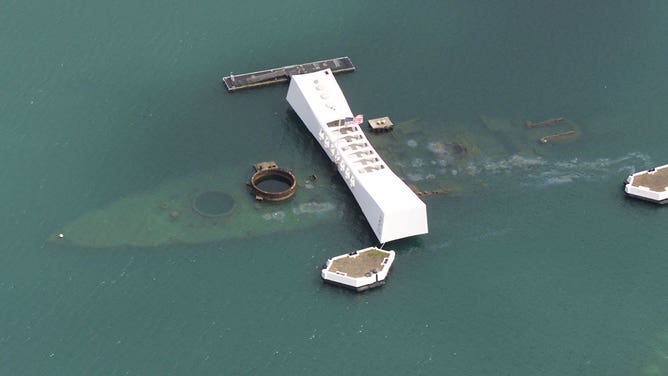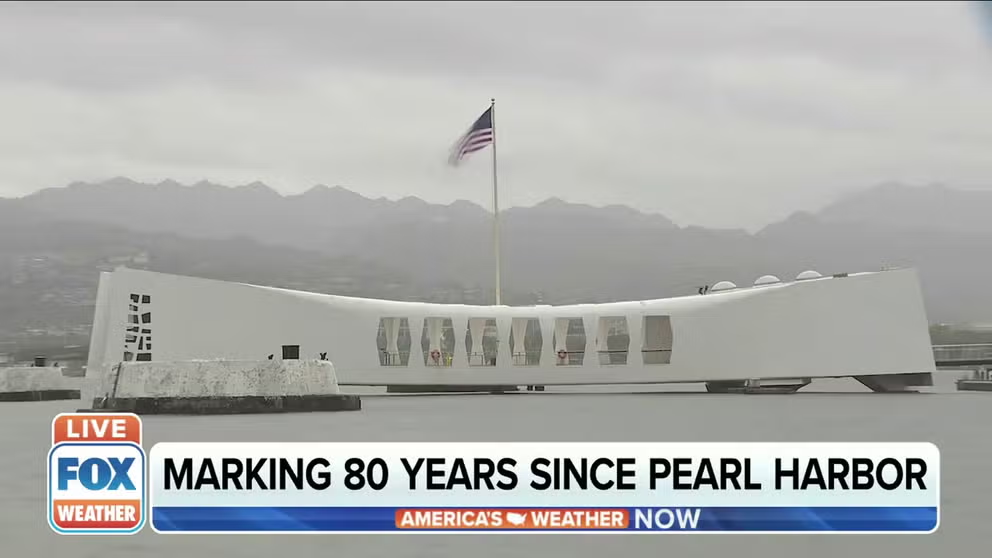Weather, climate change play big roles in preservation of ships sunk during Pearl Harbor attack
USS Arizona, USS Utah sit in harbor where they sank 80 years ago
Pearl Harbor ships protected from bad weather
Coral growth on the USS Arizona and the USS Utah prevents oxygen-rich water from making contact with the ships and causing corrosion.
HONOLULU – Two ships that sank during the attack on Pearl Harbor 80 years ago still inhabit the calm waters, and preservationists are battling both weather and climate change to safeguard these pieces of history.
More than 2,000 people were killed and nearly 20 ships were damaged or destroyed in the Dec. 7, 1941, surprise attack by the Japanese, which spurred the U.S. to join World War II.
Of the ships that were sunk on that infamous day, only the U.S.S. Arizona and the U.S.S. Utah remain submerged in the harbor, entombing hundreds of service members who died in the attack.
"There’s a feeling that you get when you’re on it, and it’s one of honor," said Brett Seymore, deputy chief of the Submerged Resources Center at the National Park Service. He has spent time diving at both ships.

Remains of battleship USS Utah (AG 16) at the USS Utah Memorial at Joint Base Pearl Harbor-Hickam, Hawaii, 2012.
(Smith Collection/Gado/Getty Images)
"You’re navigating from one point to another, and you look down on the deck, and your eye -- you catch something that you’ve never seen before, and it might be a boot, a leather boot that’s laying in the sediment. It might be a fan. We’ve discovered shaving kits with a little razor," Seymore said. "All of these little artifacts as we call them, they’re really just connections. They’re connections to the human life."
Being underwater, it’s no surprise that preserving these important connections can be a challenge.
PEARL HARBOR ATTACK LED TO US WEATHER DATA BAN
"In terms of the preservation of the ship in the harbor, is starting to look at long-range planning for impacts from climate change, sea-level rise and associated infrastructure tied to the ships," said Jay Sturdevant, the integrated resource chief at the Pearl Harbor National Memorial.
According to the NPS, an increase in heavy rain events has led to more sediment settling into the harbor. Rising sea levels are also corroding the ships at a faster rate and putting added strain on the memorial building built over the U.S.S. Arizona.
"The Arizona memorial that sits over the ship is an iconic structure that will require adaptation measures as sea levels rise and as the environment changes," Sturdevant said.

The USS Arizona Memorial in Pearl Harbor, Hawaii, May 16, 2001.
(Kevin Winter/Touchstone Pictures/Getty Images)
However, the environment has also helped preserve the sunken ships.
"The Arizona is in much better shape than most people would even imagine being in the waters, the salt waters, of Pearl Harbor," Seymore said.
"Coral and algae basically creates a scab, if you will -- an encrustation around the entire ship," he added.
That scab is what protects the hull of the ship from coming into new, oxygen-rich waters, according to Seymore. He said the water inside the lower parts of the ship is devoid of oxygen, which also aids in preserving it.
According to the NPS, these links to World War II will likely be around for people to visit and reflect on for years to come.
"We want to help them connect not only with the physical remains of the ship, but the story, and the context, and why it’s important to preserve and protect for those future generations," Seymore said.
